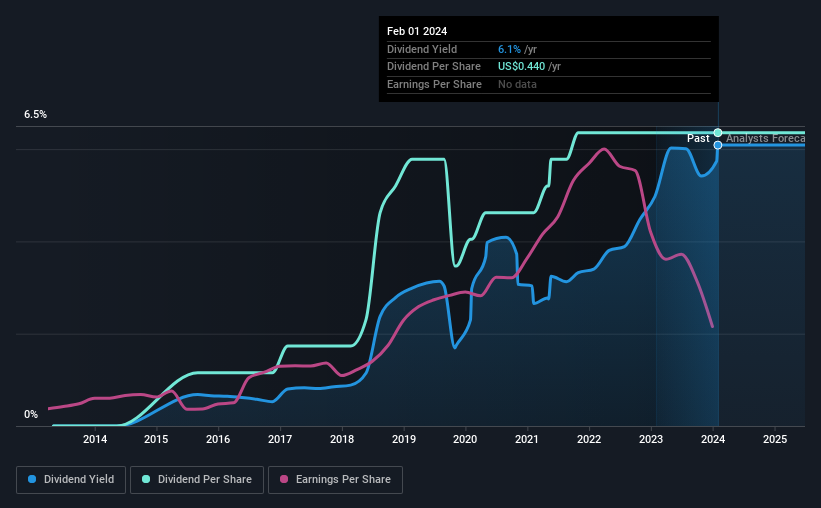Just Four Days Till Kearny Financial Corp. (NASDAQ:KRNY) Will Be Trading Ex-Dividend
Regular readers will know that we love our dividends at Simply Wall St, which is why it's exciting to see Kearny Financial Corp. (NASDAQ:KRNY) is about to trade ex-dividend in the next four days. Typically, the ex-dividend date is one business day before the record date which is the date on which a company determines the shareholders eligible to receive a dividend. The ex-dividend date is of consequence because whenever a stock is bought or sold, the trade takes at least two business day to settle. In other words, investors can purchase Kearny Financial's shares before the 6th of February in order to be eligible for the dividend, which will be paid on the 21st of February.
The company's next dividend payment will be US$0.11 per share, on the back of last year when the company paid a total of US$0.44 to shareholders. Based on the last year's worth of payments, Kearny Financial stock has a trailing yield of around 6.1% on the current share price of US$7.23. Dividends are an important source of income to many shareholders, but the health of the business is crucial to maintaining those dividends. So we need to check whether the dividend payments are covered, and if earnings are growing.
View our latest analysis for Kearny Financial
Dividends are usually paid out of company profits, so if a company pays out more than it earned then its dividend is usually at greater risk of being cut. Kearny Financial paid out 121% of profit in the past year, which we think is typically not sustainable unless there are mitigating characteristics such as unusually strong cash flow or a large cash balance.
When the dividend payout ratio is high, as it is in this case, the dividend is usually at greater risk of being cut in the future.
Click here to see how much of its profit Kearny Financial paid out over the last 12 months.
Have Earnings And Dividends Been Growing?
Stocks in companies that generate sustainable earnings growth often make the best dividend prospects, as it is easier to lift the dividend when earnings are rising. If business enters a downturn and the dividend is cut, the company could see its value fall precipitously. With that in mind, we're encouraged by the steady growth at Kearny Financial, with earnings per share up 9.4% on average over the last five years.
Many investors will assess a company's dividend performance by evaluating how much the dividend payments have changed over time. In the past eight years, Kearny Financial has increased its dividend at approximately 24% a year on average. It's encouraging to see the company lifting dividends while earnings are growing, suggesting at least some corporate interest in rewarding shareholders.
To Sum It Up
Is Kearny Financial worth buying for its dividend? While we like that its earnings are growing somewhat, we're not enamored that it's paying out 121% of last year's earnings. This is not an overtly appealing combination of characteristics, and we're just not that interested in this company's dividend.
With that being said, if you're still considering Kearny Financial as an investment, you'll find it beneficial to know what risks this stock is facing. Case in point: We've spotted 2 warning signs for Kearny Financial you should be aware of.
If you're in the market for strong dividend payers, we recommend checking our selection of top dividend stocks.
Have feedback on this article? Concerned about the content? Get in touch with us directly. Alternatively, email editorial-team (at) simplywallst.com.
This article by Simply Wall St is general in nature. We provide commentary based on historical data and analyst forecasts only using an unbiased methodology and our articles are not intended to be financial advice. It does not constitute a recommendation to buy or sell any stock, and does not take account of your objectives, or your financial situation. We aim to bring you long-term focused analysis driven by fundamental data. Note that our analysis may not factor in the latest price-sensitive company announcements or qualitative material. Simply Wall St has no position in any stocks mentioned.

